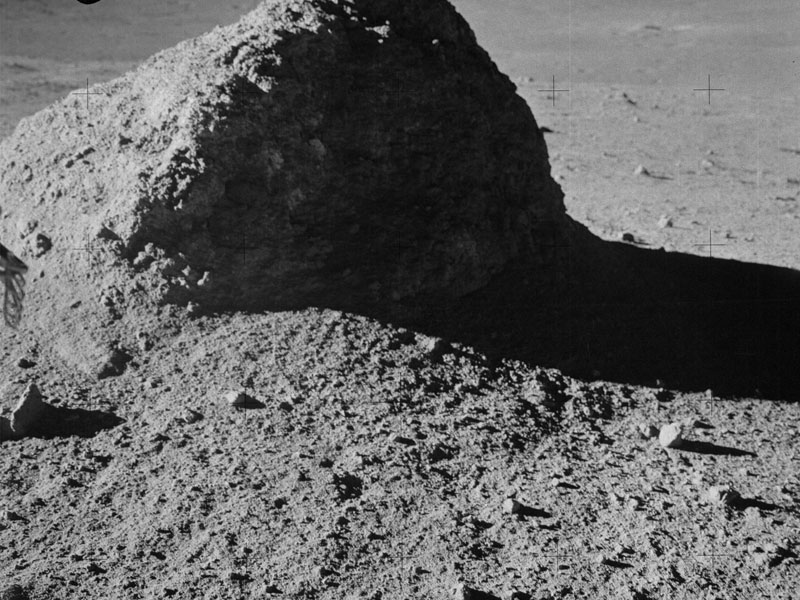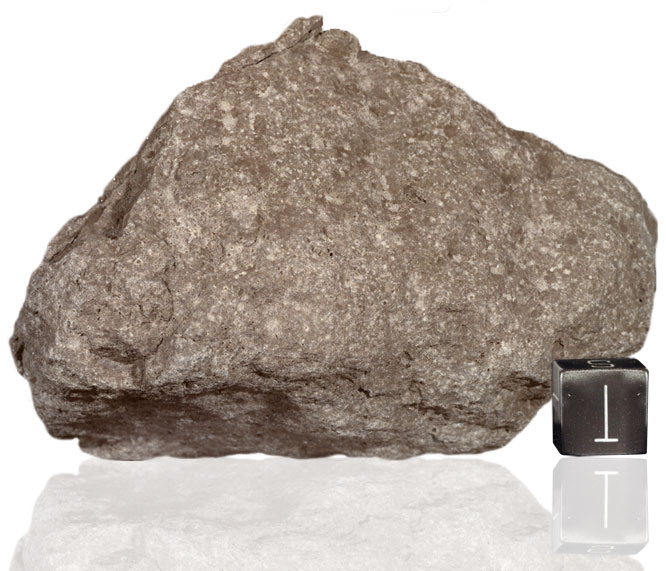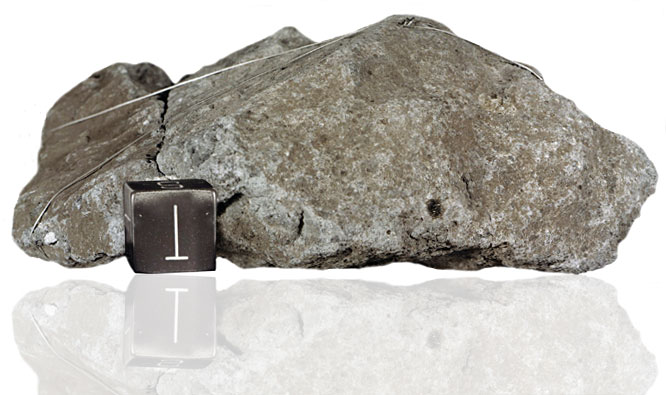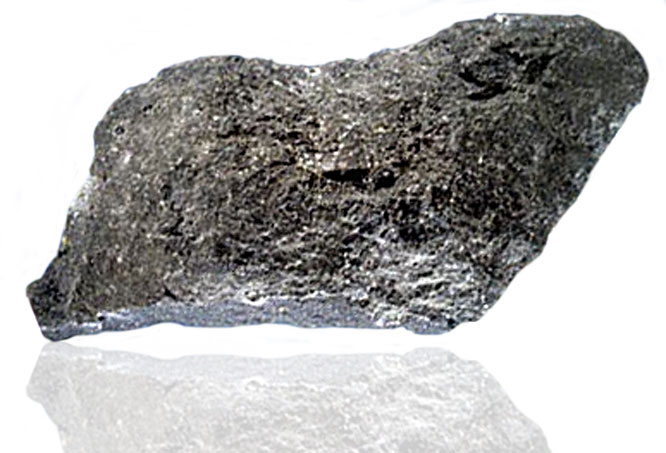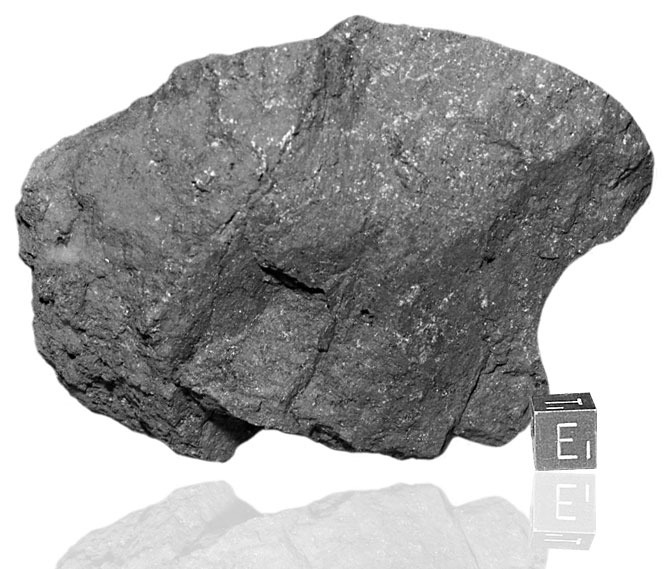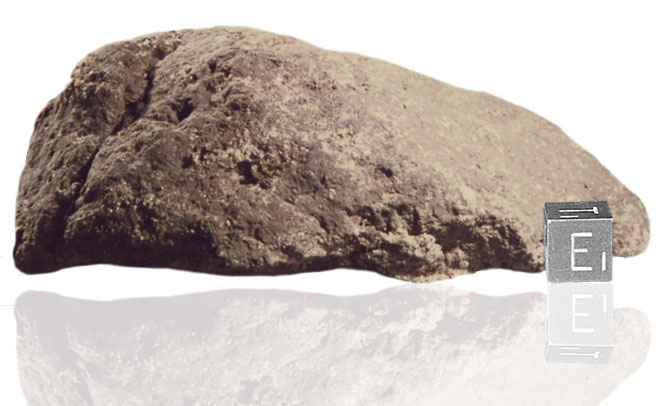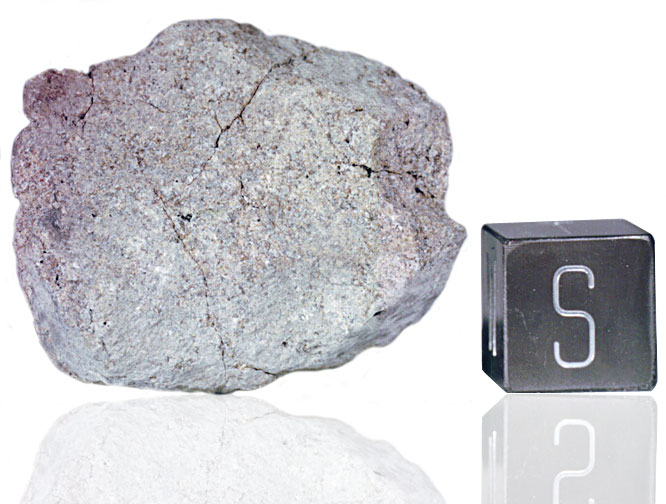
Fact sheet
Sample 14053 is a lunar Mare basalt that was found perched on the side of a boulder at Station C2 during the Apollo 14 mission to the Moon and has been dated at 3.92 billion years. This specimen is flat with one side freshly broken and the other side rounded and pitted by microcraters. Breccia material was found attached to the flat side, indicating that this basalt was probably a clast in the larger boulder (breccia).
The thin section illustrates the ophitic basalt texture with large, zoned, pyroxene grains surrounding laths of plagioclase. The rock is relatively coarse-grained and some researchers have described it as a medium-grained microgabbro. The rock has strongly-zoned pyroxene grains up to 5 millimetres in length enclosing smaller subhedral laths of plagioclase. A small amount of olivine (both as sub-rounded phenocrysts and fayalite) is located in the mesostasis, which also contains chrome-spinel, ilmenite, cristobalite, troilite, phosphates, K-feldspar and K-Ba-rich residual glass.
